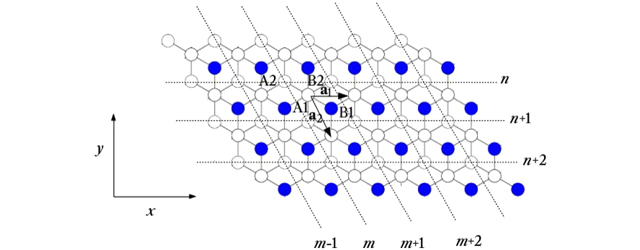Conductivity at the edges of graphene bilayers (Vol. 50, No. 5-6)

The conductivity of dual layers of graphene greatly depends on the states of carbon atoms at their edges; a property which could have important implications for information transmissions on quantum scales.
Made from 2D sheets of carbon atoms arranged in honeycomb lattices, graphene displays a wide array of properties regarding the conduction of heat and electricity. When two layers of graphene are stacked on top of each other to form a ‘bilayer’, these properties can become even more interesting. At the edges of these bilayers, for example, atoms can sometimes exist in an exotic state of matter referred to as the ‘quantum spin Hall’ (QSH) state, depending on the nature of the interaction between their spins and their motions, referred to as their ‘spin-orbit coupling’ (SOC). While the QSH state is allowed for ‘intrinsic’ SOC, it is destroyed by ‘Rashba’ SOC. In an article recently published, the authors showed that these two types of SOC are responsible for variations in the ways in which graphene bilayers conduct electricity.
P. Sinha, and S. Basu, Study of edge states and conductivity in spin-orbit coupled bilayer graphene, Eur. Phys. J. B 92, 207 (2019)
[Article]





